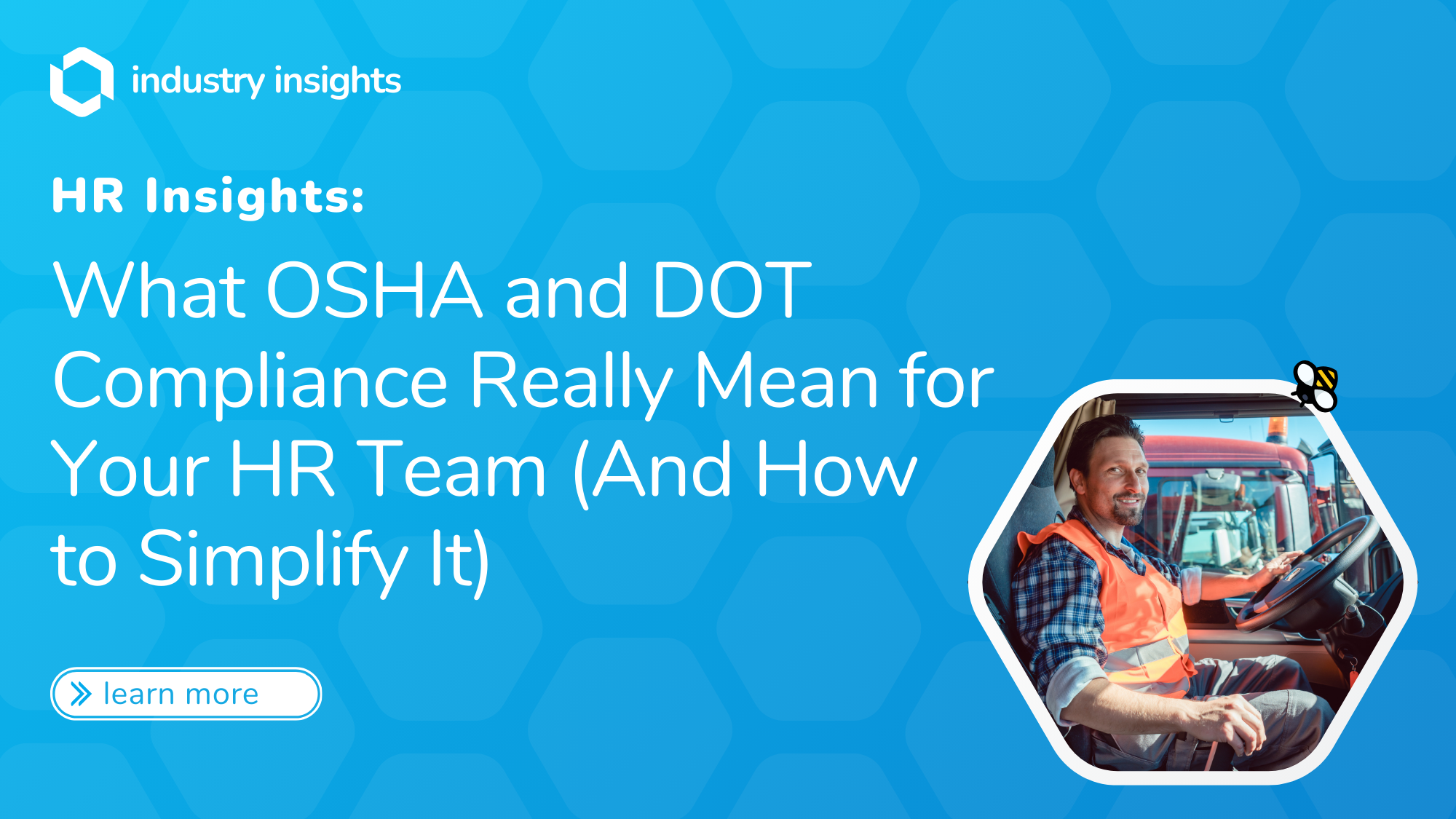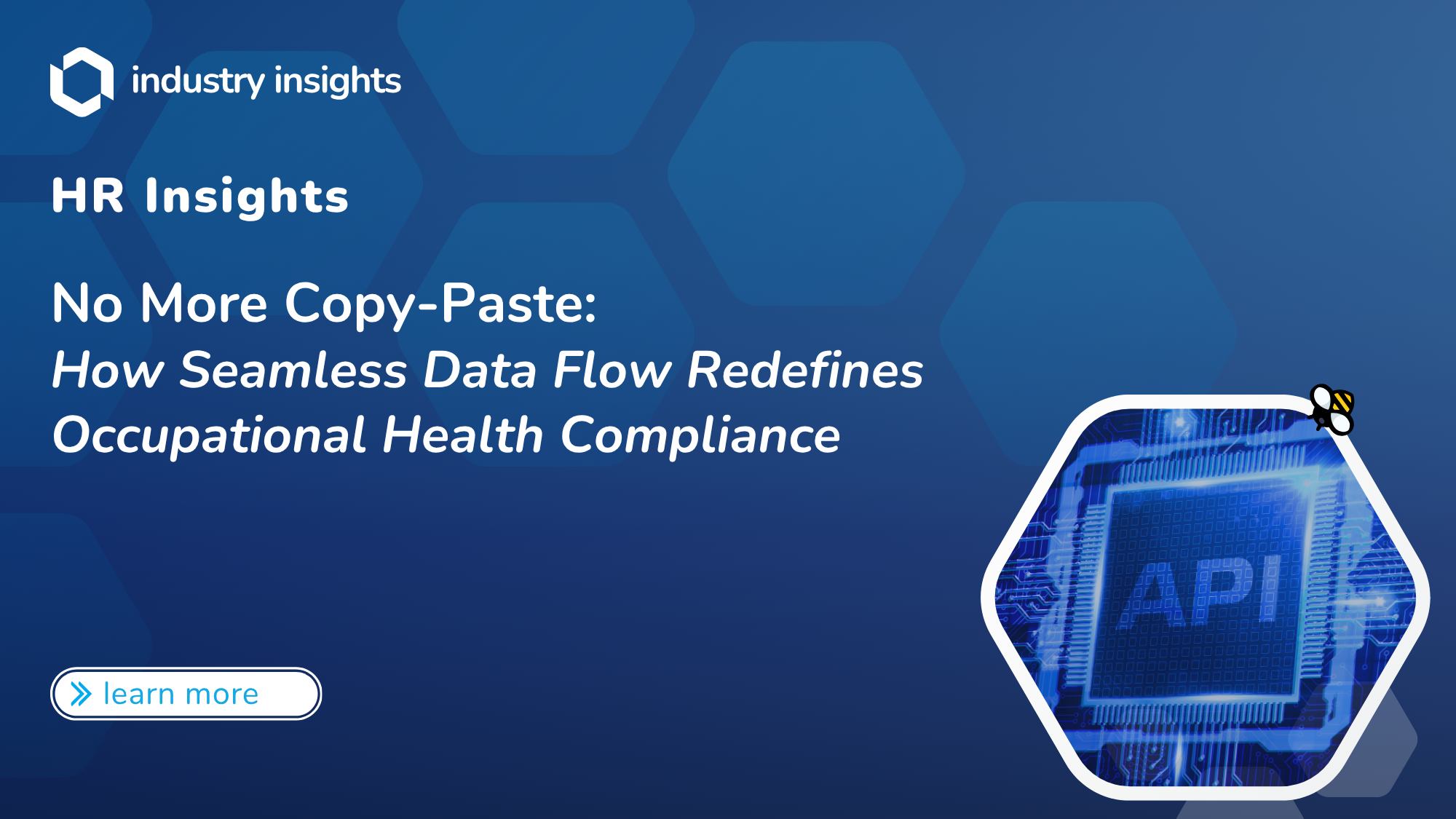“HR is about people, not endless paperwork. Let’s simplify compliance – so you can focus on what really matters.”
As an HR Professional, you’re responsible for ensuring that your team remains compliant with OSHA and DOT regulations – but let’s be honest, compliance can feel overwhelming. Between the paperwork, keeping track of deadlines, and staying updated on ever-changing rules and regulations, it’s easy to feel buried in administrative work to the point where you are not able to focus on what really matters: supporting your people.
The good news is that compliance doesn’t have to be a never-ending burden. By understanding and leveraging the right tools, you can simplify OSHA and DOT compliance, protect your organization from costly legal risks, and create a safer, more efficient workplace.
OSHA and DOT: What You Need to Know
OSHA Compliance Basics
Osha is responsible for ensuring safe and healthy working conditions. Here’s what you and your team need to stay on top of:
- Workplace Safety Standards: You must provide a safe work environment free from hazards, such as chemical exposures, dangerous machinery, and ergonomic risks.
- Training Requirements: Employees need regular safety training on workplace hazards, proper use of personal protective equipment (PPE), and emergency procedures.
- Recordkeeping and Reporting: You’ll track workplace injuries, illnesses, and safety inspections using OSHA 300 logs, ensuring compliance with reporting timelines.
- Inspections and Penalties: Surprise OSHA inspections can happen at any time, so you need to be prepared to address violations and proactively mitigate risks.
Failing to comply can result in hefty fines and increased scrutiny, making preventative measures a critical part of your HR role.
DOT Compliance Basics
If your organization has commercial drivers, DOT compliance is equally crucial. Here’s what you need to focus on:
- Employee Screenings: Pre-employment and random drug/alcohol testing keep your workplace safe, prevent liability risks, and are a requirement of the US Department of Transportation (US Department of Transportation, n.d.).
- Physical Examinations: DOT physicals ensure that your drivers meet strict medical fitness standards, including vision, hearing, and cardiovascular health.
- Driver Qualification Files (DQF): You’ll maintain up-to-date records, including background checks, medical certifications, and training records:
- A completed DOT employment application
- Medical examiner’s certificate
- Motor vehicle record checks
- Road test certificates
- Safety performance review
- Annual driving record
- Hours of Service (HOS) Compliance: Tracking driver work hours prevents fatigue-related accidents, ensuring safety and legal compliance.
Ignoring DOT compliance can lead to severe penalties, lawsuits, and even the loss of commercial driver licenses for your team (US Department of Transportation, n.d.).
Why Compliance Feels Harder Than It Should Be
You and your team know that compliance is essential, but it’s often much more challenging than it should be. Why? Because:
- Manual Processes Slow You Down: Paper and spread-sheet-based recording systems create unnecessary delays and increase the risk of errors.
- Disjointed Systems Create Confusion: Managing training, drug tests, and safety reports across multiple different platforms makes tracking compliance a headache.
- Regulations Constantly Change: OSHA and DOT update requirements regularly, leaving you scrambling to stay compliant.
- Limited HR Resources Make It Tough: With so many responsibilities on your plate, dedicating time to compliance tracking can be difficult for you and your team.
All these challenges put your organization at risk for compliance violations, fines, and operational setbacks – when all you really want is to ensure safety and efficiency.
Making Compliance Effortless: A Smarter Approach
What if compliance could be easy? By automating and centralizing compliance processes, you can:
- Eliminate Paperwork Hassles: Digital tools can help track safety incidents, medical clearances, and training records automatically, saving you and your team time.
- Streamline Employee Screening: Automated reminders for drug testing, medical certifications, and background checks can help keep you on schedule.
- Monitor Compliance in Real-Time: Dashboards and alerts help you stay ahead of deadlines and regulatory updates.
- Integrate with HR Systems: Compliance data connects seamlessly with payroll, onboarding, and employee management, making your job easier.
By reducing administrative burdens and minimizing risks, you can focus on creating a culture of safety and engagement instead of just checking compliance boxes.
How BlueHive Can Help You
BlueHive makes OSHA and DOT compliance effortless so you can:
- Automate Recordkeeping: Track training, incidents, and medical clearances without the hassles of spreadsheets or paper files.
- Simplify Drug and Alcohol Testing: Connect with a nationwide network of over 18,000 providers for fast results and ceaseless tracking.
- Get Real-Time Compliance Insights: Our customizable dashboards show you exactly where your team stands so you never miss a deadline.
- Get Automated Reminders for Expiring Certifications: With BlueHive, you can set automatic notifications to ensure that your team, managers, and even employees are made aware of expiring certifications.
With BlueHive, you can spend less time on paperwork and more time focusing on your people.
Conclusion
As HR professionals, you and your team juggle countless responsibilities. Compliance shouldn’t be a constant headache, and by automating processes and centralizing compliance tracking, you can make OSHA and DOT regulations work for you instead of against you.
Smarter compliance solutions mean fewer disruptions, lower risks, and a safer, more engaged workforce. With technology-driven platforms like BlueHive, you can shift your focus from paperwork to people – where it truly belongs!
Ready to simplify compliance? Let BlueHive help you get started today!
Download the Whitepaper:
Sources
- OSHA recordkeeping standards. U.S. Occupational Safety and Health Administration. Retrieved from https://www.osha.gov/recordkeeping
- U.S. Department of Transportation. (n.d.). DOT compliance requirements. Federal Motor Carrier Safety Administration. Retrieved from https://www.fmcsa.dot.gov/regulations
- U.S. Department of Transportation. (n.d.). DOT drug testing regulations. Office of Drug and Alcohol Policy and Compliance. Retrieved from https://www.transportation.gov/odapc/part40




